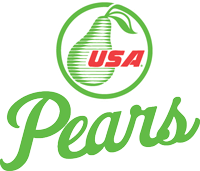
This weekend I tackled the fridge, and I don’t mean Super Bowl XX champions Chicago Bears’ William “Refrigerator” Perry. I’d like to say that I clean my fridge at least once per month, but like most Americans I only get to this important task about twice per year. Unfortunately, this practice can lead to increased food spoilage, food waste and risk for foodborne illness. According to the USDA Food Safety and Inspection Service (FSIS), 9000 deaths and 6.5 to 33 million illnesses each year are directly linked to foodborne illness – often from not keeping foods at the appropriate temperture. [1] It seems to me we need to talk about refrigerator health!
First things first: Your refrigerator should remain under 40°F. Bacteria grow most rapidly between 40° and 140°F, called the Food Danger Zone, and some can double in number every 20 minutes in this zone. These foods may look and smell perfectly fine but can cause illness, so it’s best to cool foods quickly and purchase a refrigerator thermometer. [1] Second, foods that will not be cooked, such as fruits and vegetables, should live above riskier foods, such as raw meats. These hazardous foods should reside in sealed containers on bottom shelves. Likewise, crisper drawers are appropriate places for fruits and vegetables – they preserve freshness by maintaining appropriate temperature and humidity. Third, items should not be packed so tightly in the fridge that cold air cannot circulate around foods to maintain freshness. Finally, the FSIS recommends wiping up spills immediately, particularly from raw meats, and going through the fridge weekly to discard potentially hazardous or old food. [2]
Now that spring and summer fresh fruits and veggies are abundant, make sure your refrigerator is a happy, healthy home for them – and you. Salud!
1. http://www.fsis.usda.gov/wps/portal/fsis/topics/food-safety-education/get-answers/food-safety-fact-sheets/safe-food-handling/fighting-bac-by-chilling-out/ct_index
2. http://www.fsis.usda.gov/wps/portal/fsis/topics/food-safety-education/get-answers/food-safety-fact-sheets/safe-food-handling/refrigeration-and-food-safety/ct_index
